2015 Volkswagen GTI 2-Door Review (With Video)

Although GTI sales are on an upward trend, the American hot hatch is a rare breed as there are just three options. We have the aging Ford Focus ST, and a new pair of hatches from Germany: the Volkswagen GTI and the MINI Cooper S. (Yes MINI fans, I’m calling the MINI German.) The last time I reviewed the GTI and Focus ST, the Focus came out on top despite the greater refinement Volkswagen offered. This time we have an all new GTI while Subaru has kicked the 5-door WRX to the curb, BMW has redesigned the MINI Cooper JCW and Ford has “gone Euro” by jamming a 2.3L turbo in the Mustang. Where does that leave the GTI?
Exterior
Although the MK7 GTI looks nearly identical to the outgoing MK6 GTI, park them next to each other and you’ll start to see the differences. This GTI is longer, lower and wider with a significant stretch to the passenger compartment. VW pushed the front wheels 2-inches farther forward and gave the Golf a longer hood for better proportion. The headlamps get an angrier look and the tail lamps ditch the cute round theme for a more aggressive motif.
Sounds like a moderate refresh, right? Wrong. What VW did with the Golf is akin to swapping clothes with a stranger. It may look the same at first glance, but this stranger is different underneath and the clothes fit a little better as well. That’s all possible because this GTI rides on Volkswagen’s new MQB platform which also underpins the 2015 Audi A3. The promise of MQB is to deliver faster product development cycles, lower costs, improve parts sharing and achieve better fuel economy. Indeed, the GTI is lighter than before; however, the weight difference isn’t as dramatic as I was lead to believe at just under 100 pounds. Of course the GTI did get bigger and lighter at the same time, but the top-end 3,086 pound curb weight is about the same as a 2005 GTI.
Interior
VW was once known as the “discount Audi” in America. But as part of their mission to increase sales on our shores, VW divorced the Passat and Jetta from their Euro twins and started cutting back on their other models. Thankfully, a few models escaped this fate and are still pair-bonded to the model sold in the EU. The Golf is one of them and, as a result, feels a notch above the American Passat in interior quality. From the fabric-covered A-pillars to the soft-touch door panels and dashboard bits, the feel upon entering the Golf in any form is in some ways “more Audi” than the A3. Without a doubt, the Golf has the best interior in this category, which oddly enough applies as much to the $17,995 base Golf as to the $25,095 GTI or $36,595 Golf R. MINI’s recent redesign has seriously improved its interior, but the VW is arguably on par with the JCW model in terms of parts quality despite being $10,000 less in some configurations.
Perhaps the “price” for the interior refinement is a distinct lack of power seating in most models. If you want more adjustability up front, you have to step up to the Autobahn model, which means you also receive leather instead of the attractive GTI tartan fabric. A little known fact about the GTI (and the Golf in general): the three-door and five-door versions are the same length and deliver identical interior dimensions. This means that our seemingly small three-door GTI was able to swallow two 6-foot tall passengers and a skinny third in a pinch. More surprising was the ability to squeeze a rearward facing child seat behind a 6-foot tall passenger up front. That’s different than the MINI which has a cramped back seat and even more cramped cargo hold.
Infotainment
The redesign of the GTI includes a refresh of VW’s infotainment system. Sadly, this is the one area where revolution would have been preferable to evolution. The VW software lags behind the competition and if you want navigation it is only available in the most expensive trim. All units feature expanded voice commands, finger gestures (like scrolling), and a proximity sensor to clean up the interface when your digits aren’t near the screen. Most of the system’s graphics have been improved and the media interface is more attractive than before (including the elusive navigation software). But, the system still lacks the ability to voice command your media library, and still uses a proprietary VW connector for media devices.
As much heat as MyFord Touch has received over the years, the system in the Focus ST is light-years ahead of this. Since MINI gets BMW’s iDrive on a MINI scale, it takes the top slot in this segment. However, you will have to pay some serious coin as MINI’s options list is long, confusing, and expensive. Volkswagen tells us to expect significant changes “soon” to address the deficiencies, including the VW/Audi proprietary cable.
Drivetrain
As you’d expect from a hot hatch, a 2.0L turbocharged four-cylinder engine sits under the GTI’s hood. For 2015, the 2.0L engine has been reworked to deliver 210 horsepower and 258 lb-ft of torque. That’s a slight power bump but a fairly healthy torque increase over the last gen GTI. Thanks to the turbocharger and direct-injection, we get the expected “power plateau” rather than a curve with all 210 ponies pulling from 4,500-6,200 RPM and all the torque available from a low 1,500 RPM to 4,400. If you opt for the $1,495 performance package, peak power rises slightly to 220 hp from 4,700-6,200 while torque remains unchanged at 258 lb-ft but hangs out for 200 more RPM at the top end.
All GTIs start with a standard 6-speed manual transmission including the top end Autobahn trim. Shoppers can add a 6-speed DSG to any trim. In a nod to enthusiasts, the DSG and performance package are neither forcibly bundled nor mutually exclusive. Standard on all models is VW’s XDS system which has caused some confusion among potential shoppers so allow me to explain. XDS is not a true limited slip differential. Instead, it is an advanced software package added to the car’s ABS and Stability Control systems. The software reads yaw, steering angle, wheel slip, etc and uses the vehicle’s brakes to act as both a limited slip differential and a torque vectoring differential depending on the situation. The system will gently brake the inside wheel in a corner to help “vector” torque to the outside wheel and give a more balanced feel to the car. The system also responds to potential torque steer making all GTI models more civilized.
The performance package adds an electronically controlled limited slip differential; although the design is very different than the eLSDs you see in RWD applications, the function is similar. The VAQ system (Vorderachsquersperre in German) uses a multi-plate clutch pack to deliver limited slip, full locking and torque vectoring across the front axle. VAQ does not replace XDS, instead you get both systems working for you at the same time.
Drive
The GTI we got our hands on for a week was a four-door model without the performance package. I’m glad I was able to test a GTI in this configuration because it allows me to say: get the performance package. Not for the additional ponies, or even the trick eLSD, but for the upgraded brakes and the ability to get the $800 dynamic damper package (DDC). The previous generation GTI was so eager to please, it was easy to overwhelm the standard brakes. Although the new model appears to have improved this on base trims, the upgraded stoppers are worth every penny. The standard suspension can feel a little too firm over broken pavement and at times this causes the rear to get unsettled on a poorly paved corner. The DDC package allows the suspension to deliver a more compliant highway ride and a firmer autocross ride. It also helps settle the GTI’s rear end on rough pavement.
Our best 0-60 run rang in at a 5.75 seconds which is an improvement of nearly a half second over the last generation GTI, 2/10ths faster than the last Focus ST we tested and 4/10ths faster than a dealer provided MINI Cooper JCW. If you opt for the DSG, your 0-60 runs will be a hair slower but much more consistent. Interestingly enough, this is only a hair slower than the EcoBoost Mustang.
The mission of the hot hatch could not be more different from the pony car. The Mustang is a large coupé with rear wheel drive, sexy lines and V6 and V8 engines that are shared with the F-150 pickup. The hot hatch formula starts with a practical compact hatchback, then you add stiff springs and bolt a turbo charger to a small displacement engine. For 2015, Ford added independent suspension and a 2.3L turbo to the Stang making comparisons more rational.
Obviously, driving dynamics are what separate the GTI from the Mustang, but it’s more about feel than speed around a track. As our friends over at MotorTrend recently discovered, the better balanced rear wheel drive Mustang was actually slower around a figure-eight than the GTI. Although that proclamation surprised some, it didn’t surprise me at all, given the VW weighs nearly 500lbs less. You’ll notice I haven’t said anything about steering feel. That’s because there isn’t any. A wise man once told me to never confuse steering weight with steering feel. The GTI’s tiller is well weighted but the FWD layout and the electric power steering suck all the life out of it.
Part of the reason the GTI did so well is the standard XDS system which nearly eliminates torque steer. In concept it is quite similar to what Ford uses to control the Focus ST’s front end but in the real world the VW system is more effective. Trouble is, half the fun of having a hot hatch is “riding a bull” – where your foot is on the floor and your hands and mind are fully engaged trying to keep the car going in a straight line. (The old Mazdaspeed3 acted like its steering rack was possessed by demons from hell.) MINIs Cooper JCW slots between the GTI and the Focus ST in civility. Add the VAQ eLSD to the GTI and things go to the next level with very little drama when accelerating around sharp corners. While I found the feeling a little artificial at times, I can’t deny it is faster.
Pricing for 2015 starts at $25,095 for the 3-door GTI and tops out at $35,950 for the 5-door Autobahn edition with all the options. Although VW limits navigation to the top-trim, you can add the DSG to any trim for $1,100, Performance Package for $1,495, steering HID headlamps for $995 and for $695 they will tack on front/rear parking sensors and a radar based collision warning system. If you want the $800 DDC (dynamic dampers), you have to start with the SE trim with the Performance Package ($29,280 3-door, $29,880 5-door). In a nice change from the industry norm, the transmission selection doesn’t alter the availability of the other options and the top-end Autobahn doesn’t force you to get the DSG.
Ford’s Ecoboost Mustang starts $300 higher than the GTI while the Focus ST starts nearly $2,000 lower. The MINI is in a universe all to its own with the JCW starting over $8,000 higher. The ‘Stang gets standard HID lamps in the turbo trim making both Ford models less expensive than the VW when comparably equipped. Unlike VW, Ford also allows you to add navigation to their less expensive trims and the ST gets some seriously comfortable Recaro seats in most trims.
At the end of the week, the GTI’s charms were clear: this is a hot hatch with few compromises. The MINI is cute but slower and much more expensive. The GTI has a more comfortable back seat than the Mustang and, although it’s less fun, it is faster in some situations. The WRX isn’t a hatch anymore and if you want an automatic your only option is a soul-sucking CVT. The Focus gives a more raw and direct experience, but the added weight means it’s no faster than the GTI in just about any situation. The final nail in the coffin for the competition is the GTI SE with the limited slip differential, dynamic suspension and the DSG. For $32,000, a GTI equipped in that way won’t be as much fun as others, but with all that and 28 MPG combined, it may be the best daily driver on sale. Sacrilege you say? Perhaps, but that configuration is the truest to the hot hatch concept: make a daily driver as much fun as possible.
Mission accomplished.
Volkswagen provided the vehicle, insurance and one tank of gas for this review
Specifications as tested
0-30: 2.5 Seconds
0-60:5.75 Seconds
1/4 Mile: 14.31 @ 98 MPH
Average Economy: 29.8 MPG over 675 miles

More by Alex L. Dykes
Latest Car Reviews
Read moreLatest Product Reviews
Read moreRecent Comments
- Tassos Tim is not that good with colors.The bright "pink" is not pink, but FUCHSIA. Both colors may look good on a woman's sweater, but not on steel panels.
- Tassos While I was a very satisfied owner of a much earlier Accord COupe 5 speed (a 1990 I owned from 1994 to 2016), I don't like the exterior styling of this one so much, in fact the 2017 sedan looks better. Or maybe it sucks in white. The interior of my 1990 was very high quality, this one looks so-so. The 157 k miles were probably easy highway miles. Still, Hondas are not Toyotas, and I remember the same service (like timing belt replacement) back then cost TWICE for an Accord than for a Camry. Add to this that it has the accursed CVT, and it's a no. Not that I am in the market for a cheap econobox anyway.
- 3-On-The-Tree My 2009 C6 corvette in black looks great when it’s all washed and waxed but after driving down my 1.3 mile long dirt road it’s a dust magnet. I like white because dust doesn’t how up easily. Both my current 2021 Tundra and previous 2014 Ford F-150 3.5L Ecobomb are white
- Bd2 Would be sweet on a Telluride.
- Luke42 When will they release a Gladiator 4xe?I don’t care what color it is, but I do care about being able to plug it in.



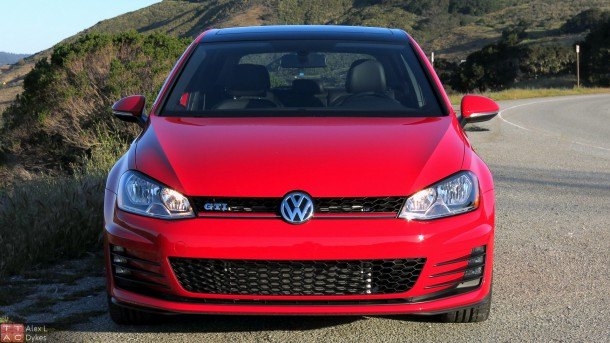































































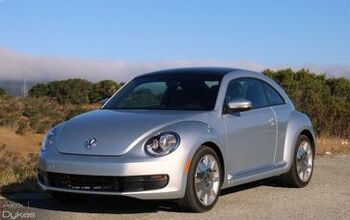
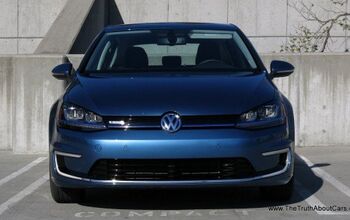
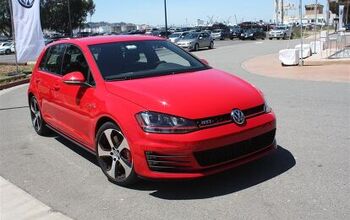
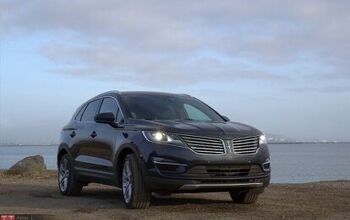
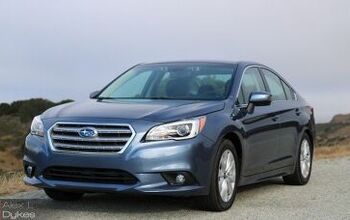










Comments
Join the conversation
I am impressed, sir, at your potential willingness to swing both ways. It's not that I wouldn't drive a flashy looking car, but if I did it would have to come with a prancing horse badge on it. And that, alas, isn't in the cards. Maybe in the lottery tickets?
I bought one and really enjoy it. It's just enough car for me, in every respect. Seats 4 adults in comfort. Compact dimensions and weight. Good power, excellent grip, great brakes. Got 36MPG cruising at 75. LOVE not having to swap cars with the wife to get anything bigger than a suitcase home. I've owned a lot of fun cars- Scirocco 16V, Integra GSR, 335i, S4, etc. The S4 Avant stick is the only one I would take over it, barely, at nearly twice the price, and Audi killed it in the U.S. so I can't get it. The article is also wrong (as were many sources) on availability of the Performance Package and the adjustable dampers: They WERE available on the S Trim. Mine is an S Trim with PP, Lighting and DDC- $27.9k When the warranty is up (maybe sooner ;-) )I'll put an APR tune in it to test that LSD with 305HP and 370TQ. With sticky rubber and the dampers set to sport, that should be a wicked drive. My Tesla-owning buddy loves it. The teenagers on the block love it. How many cars have that wide of appeal? Oh, and tartan rocks!